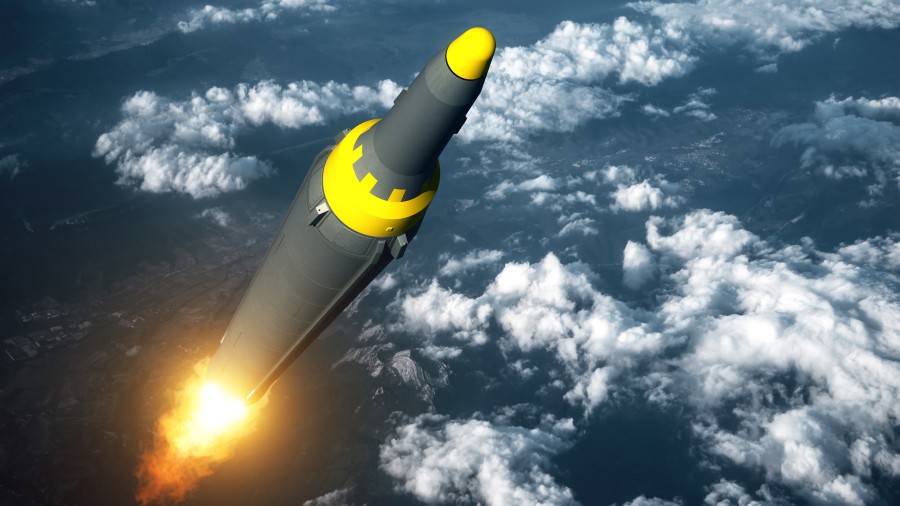Military experts call hypersonic warheads the next big thing in intercontinental warfare. They see the emerging arms, which can deliver nuclear or conventional munitions, as zipping along at up to five miles (8km) per second while zigzagging through the atmosphere to outwit early-warning satellites and some interceptors. The superfast weapons, experts say, lend themselves to surprise attacks.
Former President Donald Trump has bragged about his “super-dupers” and last year, his budget asked the Pentagon to spend $3.2 billion on hypersonic arms research, up $600 million from the previous year. As President Joe Biden takes command of the US military, he will have to consider whether to sustain the defence work undertaken in the Trump years.
Now, independent experts have studied the technical performance of the planned weapon and concluded that its advertised features are more illusory than real. Their analysis is to be published in Science & Global Security. In an interview, David Wright, a physicist at the Massachusetts Institute of Technology, US, and an author of the new analysis, called the superweapon a mirage. “There’re lots of claims and not many numbers,” he said. “If you put in the numbers, you find that the claims are nonsense.”
Military officials called the paper insubstantial, saying it was based on outdated data. But they declined to disclose new findings. “Due to the classified nature of hypersonics technologies, we are not at liberty to discuss current capabilities,” Jared Adams, chief spokesman for the Defense Advanced Research Projects Agency, or Darpa, said.
Richard Garwin, a physicist and longtime adviser to the federal government, called the paper “very good and important”. He added that he had provided his own similar criticisms of hypersonic warheads to defence officials.
James Acton, a nuclear analyst at the Carnegie Endowment for International Peace, called the paper “a serious, credible and important piece of work”.
Wright is affiliated with MIT’s Laboratory for Nuclear Security and Policy and did the analysis with Cameron Tracy, a materials scientist at the Union of Concerned Scientists, a private group based in Cambridge, Massachusetts, which often backs arms control.
By definition, hypersonic vehicles fly at more than five times the speed of sound — or up to dozens of times faster than jetliners. The warheads rise into space atop a traditional long-range missile but then descend quickly into the atmosphere to bank, careen and otherwise manoeuvre. They’re basically stubby gliders. The curved upper surfaces of their wedge-shaped bodies give them some of the lifting power of an airplane wing.
Wright and Tracy based their analysis on the Hypersonic Technology Vehicle 2 — an experimental warhead developed by the US Air Force and Darpa. Their findings, they say, also apply to other American prototypes, as well as devices being developed by China, Russia and other nations.
The computer simulations drew on the physics of moving bodies and public disclosures about the Hypersonic Technology Vehicle 2 in order to model its most plausible flight paths. The team zeroed in on signature phases of hypersonic flight — when the vehicle zooms through the atmosphere and then plunges to hit a target. The two experts say their computer modelling fills in public gaps on the weapon’s overall performance as well as its potential interactions with military systems for detecting and defeating weapons launched from distant sites.
In their paper, they see the weapon as essentially failing to outwit early-warning satellites and interceptors. For instance, current generations of space-based sensors, they report, will be able to track the weapon’s fiery twists and turns during most of its flight through the atmosphere.
And surprisingly, given the weapon’s speedy reputation, they say their analysis shows it will fly intercontinental distances more slowly than ballistic missiles and warheads fired on low flight paths known as depressed trajectories. In war, such tactics are seen as a good way for attackers to evade interceptors and lessen warning time.
Wright and Tracy conclude that the envisioned new weapon is, at best, “evolutionary — not revolutionary”.
In their paper, the authors contrast their findings with military claims. For instance, they quote the 2019 Senate testimony of Gen. John Hyten, the air force officer then in charge of US Strategic Command, which controls the nation’s nuclear missiles. The time it would take a hypersonic warhead to complete an attack, Hyten said, “could be half” that of a standard missile. “It could be even less,” he added.
The clashes between public views of hypersonic warheads and their actual abilities, the two experts conclude, arise from overstated official claims meant “to justify the expenditure necessary” for their development and deployment.
The team’s analysis, he noted, focusses on an underlying issue of physics that he said casts doubt on the new class of weapons in general.
It’s what aeronautical engineers call the lift-to-drag ratio. Lift pushes a speeding aerodynamic body up, and atmospheric drag tries to counteract the forward motion, at worst prompting a stall.
Wright said the team’s analysis of the hypersonic vehicle used a lift-to-drag ratio of 2.6. In contrast, jetliners and some birds have a ratio approximately eight times higher. In other words, the warheads at best are unimpressive flyers.
The limited power of the curved, blistering hot surfaces to generate a substantial lifting force without also producing lots of drag undermined claims that the weapon can fly long distances on complex trajectories, he said.
“Unless they’ve found some magical way to keep these systems up,” Wright said, “they’re going to have problems.”
NYTNS











